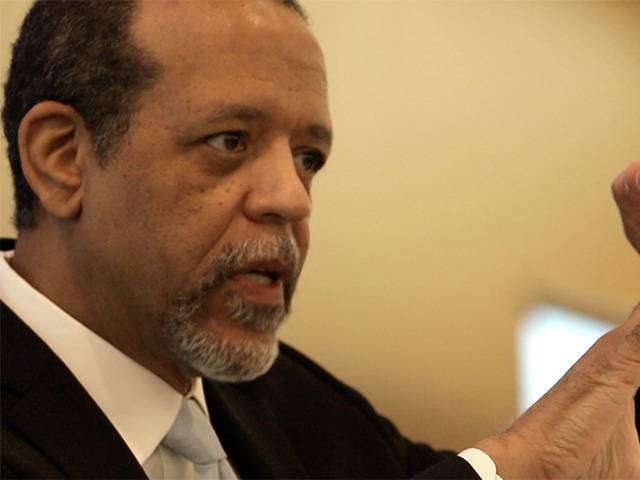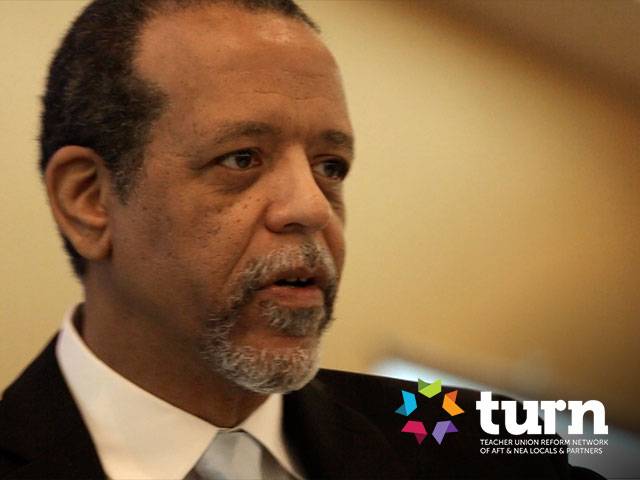Video 2 Author and Harvard professor Ron Ferguson discusses the importance of both excellence and equity to ensure the needs of ALL students are met. He shares the concept of group proportional equality. This is achieved when a district’s already high achieving students reach higher levels of academic achievement, while at the same time, the district’s struggling students improve at a faster rate, in order to equal or close the achievement gap.
Video Transcript
[00:00:08] The excellence with equity, my framing of that way actually comes from working in suburban communities. I know two superintendents who lost their jobs, because they got too vocal and too excited about narrowing and closing racial achievement gaps. And the upper income white parents in those communities actually elected new slates of people to the school board with the express purpose of getting rid of these superintendents, and they were places where their kids had actually been very well served, but nobody was talking about that. Nobody was talking about it too much in public. [00:00:42] And so just as a political framing to get these parents to allow the equity agenda to be part of what you're working on, you want to assure them, "No, we are attending to excellence," all right? And as we attend to excellence, we want to it for everybody, so it's excellence with equity, but the same intention as you have when you say equity through excellence, right? So there's a picture, there's a diagram that draws the bell-shaped curve for the low achieving group and then the overlapping bell-shaped curve for the higher achieving group. [00:01:12] Closing achievement gaps would just mean pulling those two curves together, and you could do it by evening down, right? You take the higher achieving group, pull it down. You've got perfect overlap, you've got perfect equality, all right? The usual image is we take the high achieving group, and we move the other one up to close the achievement gap, but the fact is that even our high achieving groups aren't doing as well as they could or should, all right? So the image is you want to move the high achieving group up, and you want to move the lower achieving group all the way up, so that the curve ultimately completely overlaps. [00:01:46] And at that point, you have what's called group proportion equality, where knowing somebody's race, or ethnicity, or background tells you nothing about their achievement levels. And at that point, you have excellence, and you also have equity. You have excellence with equity. You can say, "And equity," but privileging excellence, I think, helps to get the buy-in from the folks with whose kids are already on top and who worry that their kids aren't going to be paid any attention to. You know, if I'm a white parent in a well-to-do community, why would I buy into this closing the achievement gap thing, other than I'm just a good person? [00:02:25] And so we want to frame it, so we can get buy-in from our entire community, and the frame is we want to move everybody up, or we want to move the kids that are farthest behind up even faster and further. Then everybody can buy into the excellence thing, and I have no problem if your kids want to be excellent, too, but I want mine to be up there, right? And so it's really a framing strategic question. I mean, our values are in here obviously, but we want to frame it in ways that we can get the buy-in from the community. And in your own communities, the question is how do you talk about what it is you're trying to achieve in ways that gets folks to buy in? [00:03:07] I mean, I teach a semester-long course called Strategies and Policies for Narrowing Achievement Gaps, and so my students don't like this framing of it, because they're afraid that the world won't pay attention to equity. They're are afraid if you put a lot of attention on excellence, then people will only look at the kids who are already performing well and will be trying to put the resources and all the attention on them, and they'll forget the kids who are struggling. And the equity agenda will be neglected. And people tend to emphasize whichever part of the agenda that they think will most likely be neglected if it's not lifted up. [00:03:41] And there's a balance to strike, because if you lift up the equity agenda too much, then the folks who are afraid that that will disadvantage them come in, as I was saying, and get rid of the superintendent, if he's too excited about it. And so their politics and the wording matters, and I tend to lean toward the excellence with equity, but I can also see why a bunch of other framings might be preferred. Most of us are born pretty much the same, and our life experiences pull us apart. And so of all of us have the kinds of life experiences that give us the opportunity to be our best selves, we're likely to end up with quite a bit of equity in the way that it turns out. [00:04:24] There's a book that's downloadable off the Achievement Gap Initiative website agi.harvard.edu. If you go in there, you scroll to the bottom of the home page, you'll see a place where it says, "Publications." You can click on that, and you go find a little 200-page report on exemplary high schools. I like to go and rank order all the schools in the state of Massachusetts by their value-added achievement gains and then go and pull out the schools that are making big gains with racially mixed and socioeconomically mixed schools. [00:05:03] Four years ago, we pulled in together into a conference for two days, we said, "How did you do that?" And they told us how they did it, and that's what the book is about, all right? And they did it by reorganizing the way that the adults work together in the schools, by spending their time differently, by reallocating resources. They stopped having faculty meetings in one school. They had 250-minute blocks per month allocated for faculty meetings. They created a new committee of teachers that plan the professional development, and they use their faculty meeting time for professional development, and they did in a very thoughtful way. [00:05:37] In two years in that school, if you take the kids that they had as tenth graders for the black and Hispanic kids, their eighth grade scores were at 70-something percent of the statewide average for white kids at eighth grade. By the end of tenth grade, their scores were at 93% of the statewide average for white kids. They had narrowed the gap by two thirds in two years in English language arts at the school with no new money. [00:06:06] Their white kids had been at 95% of the statewide average for white kids at eighth grade. By tenth grade, they were 106% of the statewide average for white kids. Their black and Hispanic kids had come up faster than their white kids, but they had all come up, and so they had the movement toward excellence with equity. They all did better relative to the statewide average for whites, and the black and Hispanic kids did move faster. And it's because they organized the way they did school. They reorganized, and they thought carefully. [00:06:42] Other schools did different, had different ways with similar results. A school in Cincinnati, they were way below the statewide average for whites. They had black kids above the statewide average for whites after that. If you look in the national data for the NAEP, the National Assessment of Educational Progress, look at the nine-year-old scores for blacks, whites. and Hispanics since the 1970s, what you'll find is that they've all come up particularly in math. But generally, the trend is they're all coming up, but the black and Hispanic kids are coming up a little faster than the white kids are as nine-year-olds. [00:07:16] As 17-year-olds, they've have been stagnant since 1990, pretty much everybody's been stuck. It's as if this floor has being coming up, but the ceiling is being constant. The floor is how the younger kids are arriving at secondary schools. The secondary school's done the way we always did it, and so what's learned and the gain in secondary schools goes down, because kids leave the same way they always left. But the little kids you've been doing better. So resources help. A lot of stuff we need to do cost money, so I don't want to deny that, but without much more money, we can do things differently in ways that would make a difference. [00:07:52] And when you do things really well, it's often the case that the kids further behind benefit the most. There are a number of mindset interventions that have been done recently, where they manipulate kids' expectations of belonging, or of growth mindset, and so on, and what they're finding is that the students of color often benefit more than the white kids from those mindset interventions. And it doesn't hurt the white kids. But the students of color are the ones that are more likely to have had some of the insecurities that leave their feelings of insecurity that undermined their own performance and so on, right? [00:08:31] So advocating for greater resources is great. We should do it. Great resources often matter if we use them well, but even without many more resources, we can move some stuff around in the way we spend our own time and attention and the way we operate as learners, as professional learning communities.









